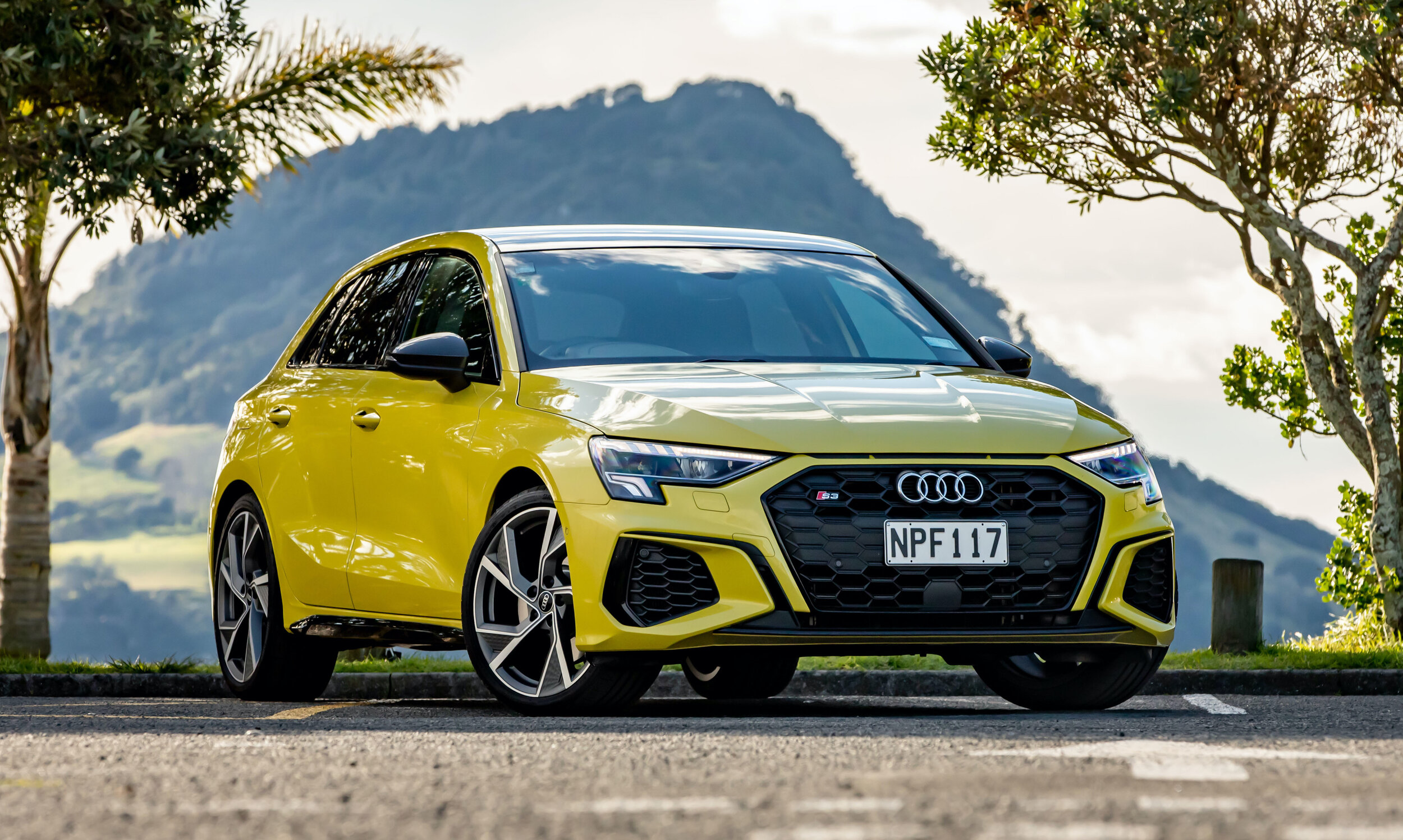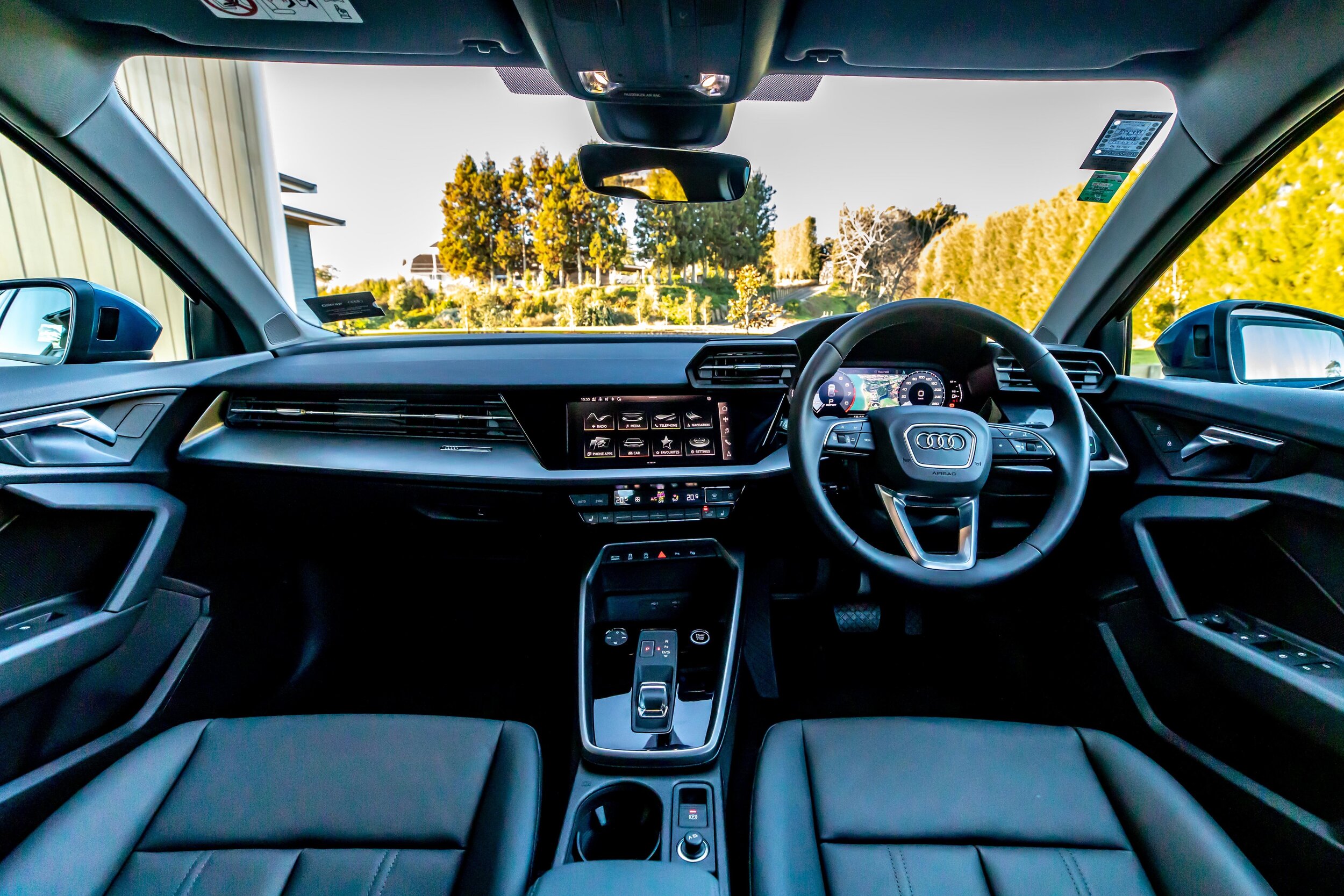Audi A3 and S3 first drive review: Still in the ring
/The car claimed as the template for premium family hatchbacks achieves evolutionary looks and sharp technology in its 25th year.
COMPACT hatchbacks no longer reign as strongly as they once did, but there’s still plenty of opportunity for the type claimed to have kicked off the premium compact genre.
So says Audi New Zealand in respect to the new A3, the latest generation of a car that, 10 years ago, was the make’s core product. Only to fall victim to the consumer swing toward sports utilities.
Today the Q5 is the volume leader, SUVs account for 70 percent of Audi volume here … and the A3? Not so much. From the look of shared data, it achieves at best about 10 percent of the action enjoyed by the higher-riding, bulked fare.
Still, even though bumped, the ‘original premium compact hatch’ is not set to be knocked out of the four rings.
As fringe as the A3 might now be, it’s the car chosen by many when they buy into their first new or used Audi. “It has been a gateway to Audi for so many,” says local general manager Dean Sheed.
Also, it achieves a high rate of interest from young purchasers; the entry models with females, the more steroidal with guys.
So, after already clocking 25 years’ service, on it goes. This fourth-generation line relates closely to the latest Volkswagen Golf, so accordingly follows the same formula - an updated version of the preceding platform, new engines and updated tech and slightly more cabin room, availing solely in five-door hatch - that’s Sportback in Audi-speak - form across three levels.
Pitching for mainstream interest are a front-drive 1.5-litre and a quattro 2.0-litre, while a sporty and also all-paw S3 for performance players that’ll stand as the flagship and family pacesetter until the fully hot RS3 arrives early next year.
Already on the ground and driven at the media preview are the entry $57,900 110kW/250Nm 35 TFSi Advanced and that $89,500 228kW/400Nm S3. The $69,900 TFSi 40 that’ll place between them is still two months away and could yet achieve as the best-selling of the trio.
And that’s it? Well, not quite. As is well known, Audi is on an increasingly electric charge and though the A3 is not set to become fully battery-reliant until its next evolution, there is a plug-in hybrid in the current family.
Sheed says he is keen to take the 40 TFSI-e, in all intent the modern equivalent of the ‘original’ e-tron – the plug-in A3 that rolled up in 2015, hung around for four years and accounted for more than 150 sales during that period.
E-tron now means pure electric. Like with the A3 of 2015, the TFSi-e is petrol-electric with plug-in replenishment, but now it’s less a range extender than a range enhancer. So, petrol drives the wheels and electric ekes economy, though it can also sustain direct drive for 70 kilometres in the latest form eyed by Audi NZ.
Sheed says he’d like to have this and potentially other PHEVs here to act as a handy bridge to the full-blown latest-gen e-trons. In the 40 TFSi’s case, it’d realistically be the stepping stone to the brand’s third (after the e-tron SUV and e-tron GT), the Q4, which though on a different platform and SUV-shaped is roughly the same size.
Whereas TFSi-e is set for 2022, Q4’s arrival timing remains more fluid (though VW Group likes our Clean Car rebate, 2023 still seems a best bet). Sheed is anxious to have it. Not only is Q4 expected to not only be Audi’s biggest volume EV globally but he can see it becoming Audi’s NZ’s highest volume car.
Back to the here and now, the A3 arrives as plush petrol prestige; nicely styled, distinctively creased and all in all a quality item that is sure to be noticed and coveted by your neighbours.
Like a certain other from the VW Group (think bag of hitting sticks, small white ball), it achieves a striking design. Deeper and sharper creases along the flanks, more prominent wheel arches and, as is traditional, an even bigger and more aggressive grille with big air inlets.
Digital daytime running lights of the optional Matrix LED headlights are a finishing touch that’ll be hard to resist; they consist of a pixel array made up of LED segments in a three by five arrangement that creates special light signatures. Twee but cool.
The interior is reminiscent of other recent Group arrivals; so, a new shifter, aluminum or carbon inlays, striking door openers and an instrument panel with a black-panel look. The main display is re-integrated with the dash (doing away with the dashtop tablet look), and vents return to a more angular look. The main console is more minimalist and more focused on being ‘digital’, though not to the extreme that you find in a certain VW. Here there are still some buttons and it retains proper physical controls for the heating system, with real switches. Removing the scroll wheel for the media system feels like a backwards step, though.
The NZ market spec is fulsome. The cockpit, for instance, takes a 10.1-inch touch display as standard. It recognises letters entered by hand, provides acoustic feedback and can be controlled using natural language. The instrument cluster, operated via the multifunction steering wheel, is also digital as standard. This screen measures 12.3 inches diagonally, and offers three different views, including a large display of the navigation map,. A head-up display that projects information onto the windshield in colour is an option.
The MMI is powered by the new third generation modular infotainment platform. Its computing power is 10 times higher than that of its predecessor, and it performs all tasks relating to connectivity, including telephone and Audi connect services with LTE Advanced speed, and it also has an integrated Wi-Fi hotspot. How sharp is that?
Individual settings can be stored in up to six user profiles – from climate control and the seat position to frequently selected navigation destinations and frequently used media. Route guidance in the standard satellite navigation system is even easier and more flexible. For example, the navigation offers predictions on the development of the traffic situation, and high- resolution satellite images from Google Earth.
Audi Connect also enriches points of interest with photos, opening hours and user reviews. The connect services also include the car-to-X services, which help to find free parking spots on the roadside. The A3 Sportback is connected to the smartphone via the myAudi app, Apple CarPlay or Android Auto.
Keeping to technology, the car in all forms has Audi pre-sense front, swerve assist and lane departure warning. Lane change and exit warnings, as well as cross-traffic and park assist systems, are also standard. The adaptive cruise assist maintains the speed and distance to the vehicle in front and assists with lane guidance by means of gentle interventions in the electromechanical steering.
The cabin environment is tasty but it’s very much a driver-centric model. There’s room for a family, yes, but it’ll get a bit snug with five aboard, that’s for sure. The cabin dimensions are identical to the preceding car save for width, which is increased millimetrically. The body is 33mm longer than before, but all of that is accounted for by a nose redesign to improve pedestrian crash testing.
Driving wise, there’s a lot of difference between the entry model and S3 – and you’d be surprised if there wasn’t: Front-drive versus quattro and different rear suspension designs for a start. The S3 sits lower and though the standard spring and damper tuning is quite firm with both, the S3 is less yielding and the steering is sharper, the brakes bitier. Common is the degree of road noise. Audi’s tyre choices raise something of a din on coarse chip.
The cheaper car’s engine isn’t lacking fore responsiveness but obviously it hasn’t the same snap as the S3 and it also overtly tunes for lean and Green. It has a 48-volt mild-hybrid system and delivers a cited optimal combined fuel consumption of 5.0 litres per 100km on the WLTP scale.
On first impression, the 1.5 smacks as a refined and polished power unit; somewhat quieter in operation than the racer, but you’d expect that. Over longer runs, it should prove reasonably economical.
The S3’s more aggressive, and not just in how it performs. The large front air intakes; silver detailing all over the place; larger alloys; a rear spoiler, front splitter and a lower body kit; and then quad-exit exhausts at the back. Choose the Python Yellow hero hue and it’s unmissable.
It has a flat-bottomed steering wheel and a few displays in the instrument cluster unique to it, plus better front seats, but otherwise it looks almost identical to the standard car inside.
No points for picking that it has the EA888 engine; that unit resides in all four-cylinder performance VW Group models. Here it is claimed to produce the same power as was delivered to the old S3, but with a 20Nm increase in torque.
Zero to 100kmh in 4.8 seconds is still 1s shy of what’s being claimed for the RS3, but in feel and demeanour it’s nonetheless a fast car; one certainly demanding attention and respect on wet roads today, regardless that grip from the decent 19-inch rubber seemed largely unimpeachable.
Is it involving enough? A question asked of every S3 seems relevant still. I’d say for a lot of people it definitely will be. Put your foot down and it’ll achieve a rapid lick in no time and work the transmission and there’s even some exhaust pop.
Audi’s S suspension is 15mm-lower than standard and achieves its own spring/shock absorber tuning, with adaptive dampening modes; Dynamic being the most intense. The car feels and sounds most rewarding there, but comfort levels do suffer.
Still, quattro and NZ roads seem made for each other. The traction out of corners is impressive. Likewise understeer is well contained and body control is excellent.
It’s a car that, on first meeting, makes the act of going quickly incredibly accessible, if mostly largely undramatic.
In many ways, the new A3 is evolutionary. Styling is familiar, the platform beneath is a version of the Volkswagen Group's MQB architecture. That’s no problem. It’s a highly polished car that pushes the game along impressively. Though, of course, you could say the same about a certain other in the broader family.





















